
Eating healthfully can support healthy aging because older adults have unique nutritional needs. Learn how to cook for one on a budget by making these simple adjustments that can go a long way toward building a healthier eating pattern. Follow the tips below to get the most out of food while meeting your nutrient needs.
Nutrition Changes When You Age
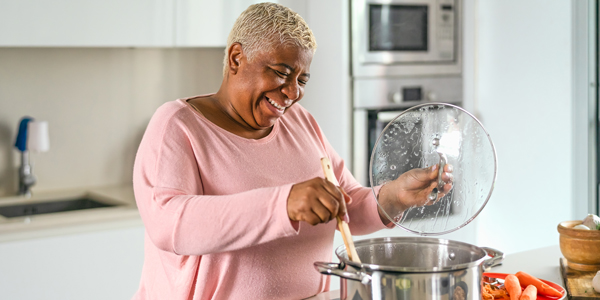
Older adults' nutritional needs change throughout their lifetimes. Some physical changes may impact appetite, senses and fluctuations in your digestive system. These changes may be due to aging, decreased physical activity or in conjunction with prescriptive medication suppressing your appetite.
Having a decreased appetite may impact your intake of calories, essential vitamins, minerals and proteins needed to maintain muscle mass and prevent unintentional weight loss. When it comes to appetite, decreased senses of smell and taste can also affect the enjoyment of your food’s flavor and aroma. For digestion, your gastrointestinal tract could become less mobile and more rigid — leading to issues including constipation, stomach pain and nausea.
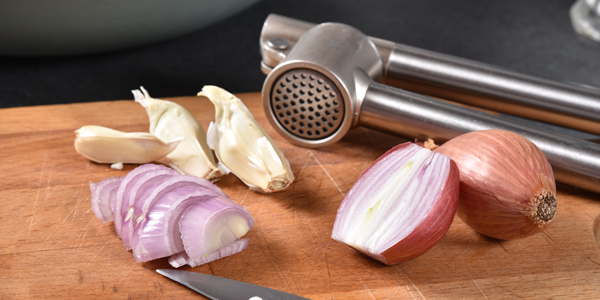
To overcome any decrease in taste and smell, get creative. Cook with spices, herbs, aromatic vegetables like celery, onion, garlic and shallots, and savory sauces to engage your taste buds. Select higher-quality food; cook seasonal fruits and vegetables so they have a softer mouthfeel in recipes like soups, stews and casseroles; drink plenty of water; and reduce stomach irritants, such as alcohol, to overcome physical changes as well.
As you age, your nutrition may be affected by your social and financial situation versus physical. For example, your social circle may become smaller due to the loss of a spouse, family members and friends. Living alone and cooking for one while eating on a fixed income can present challenges for some as well.
Not all is lost! Below are our tips when cooking for one on a budget.

Be a Savvy Shopper
- Get the most out of your food budget and purchase meat and shelf-stable foods when they are on sale.
- Stock up on fruits and vegetables when they are in season.
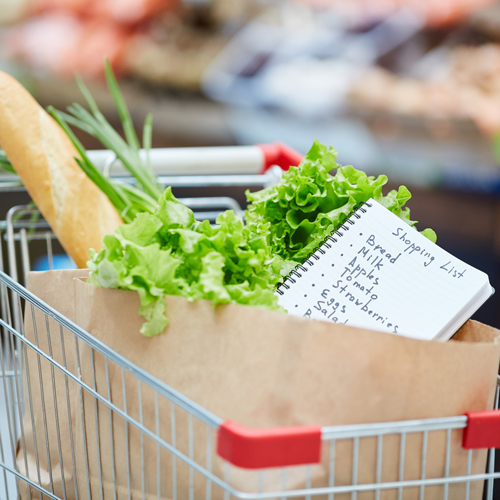
Be an Organized Shopper
- Plan meals in advance and create a shopping list from your menu.
- Buy store-brand items of the same quality items at a lower cost.
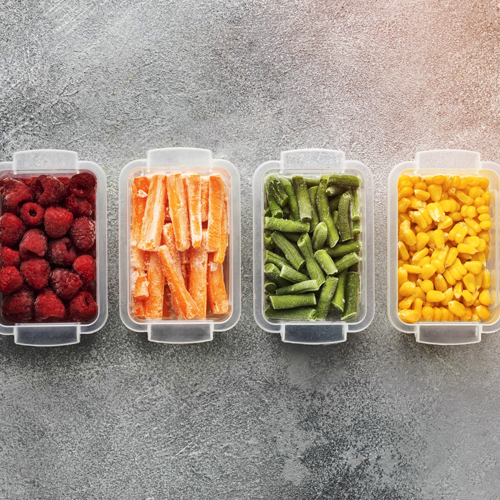
Freeze Your Meals
- When cooking for one, a great, affordable option is to cook and freeze meals. To do this, make multiple servings versus just one. Divide quantities into individually sized portions and freeze for future ready-made meals.
Preserving with Freezing
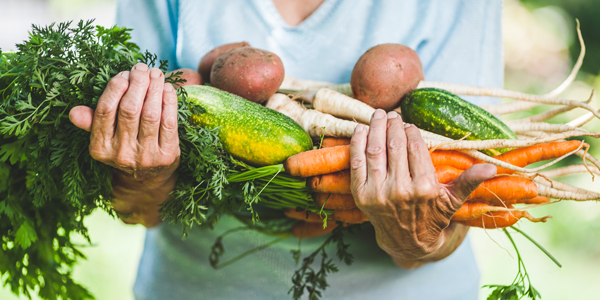
Why freeze? Freezing temperatures stop the growth of microorganisms while slowing the chemical reactions that break down food and reduce its quality.1 Take advantage of less expensive seasonal fruits and vegetables and preserve their fresh-picked flavor by freezing them to enjoy the taste of summer for seasons to come!
Produce that freeze well are tomatoes, corn, carrots, peppers, zucchini and berries. High-water content foods such as melons, cucumbers, lettuce and eggplant should stay clear of the freezer.2 Avoid discoloration of fruits such as peaches, apples, pears and apricots by tossing with lemon juice prior to freezing.3
For the best flavor and texture, use ripe, non-bruised produce free of nicks. Most raw fruit freezes just fine without blanched (see below!).4
Tips for Freezing
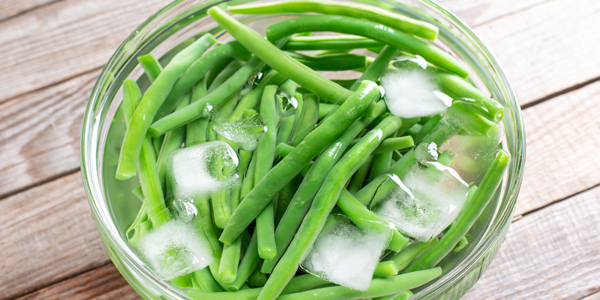
- Rinse and cut produce into the desired size.
- Blanch vegetables before freezing.
- Drop vegetables in boiling water for one to two minutes. Immediately transfer to an ice bath and chill completely to help stop the cooking process. Drain and pat dry.
- Place fruit or vegetables in a single layer on a sheet pan lined with wax or parchment paper. Place in the freezer until the produce is frozen solid.5
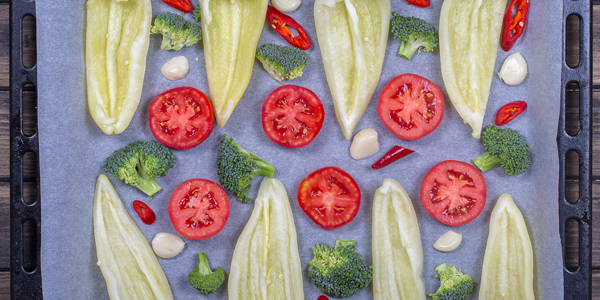
- Once frozen, pack into whichever freezer-safe container you prefer— freezer-safe food storage bag, plastic container with an airtight lid, plastic wrap or aluminum foil. Avoid glass, as it can shatter and cause your food to become unsafe to eat.
- Only leave a ½- to 1-inch space at the top of containers. Reducing food’s contact with air will prevent “off” flavors or freezer burn.
- Store sauces and soups in freezer-safe food storage bags and lay flat on shelves to save space.5
Tips for Storage
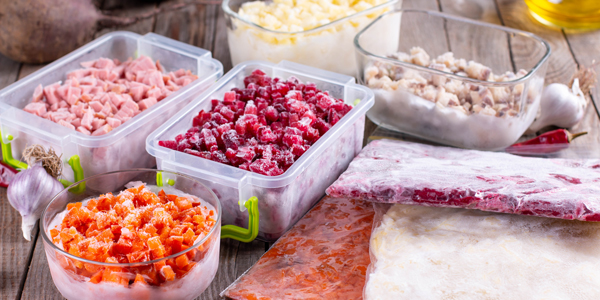
- Practice food safety when cooling leftovers. Cool to room temperature for no more than two hours, or one hour for hot summer conditions greater than 90 degrees Fahrenheit to avoid the risk of a foodborne illness. Putting hot food directly into the freezer creates condensation on the food, which can lead to freezer burn while possibly raising the temperature of the refrigerator. Although freezer-burned food may have off flavors, it will not cause you harm.
- Label foods with prepared, frozen and use by dates. Soups and stews with meat can be frozen for up to 2 to 3 months. Leftover meals can be frozen for 2 to 6 months and fruits and vegetables can be frozen for up to one year.
Tips for Thawing
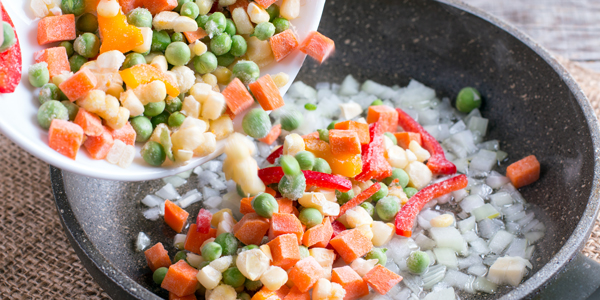
- Determine the quality of food after thawing. First, check odor as some foods will develop a rancid or off odor when frozen too long. Discard such items.6
- Note: Although some items may not look picture-perfect when frozen, they work exceptionally well in soups, stews, casseroles and sauces.
- Never defrost foods at room temperature. Use these three safe ways to defrost food:
- In a refrigerator running at 40 degrees Fahrenheit or lower.
- In the microwave.
- Under cold running water.
- Note: For foods thawed in the microwave, or by running cold water, cook immediately after thawing.7
Tips for Use
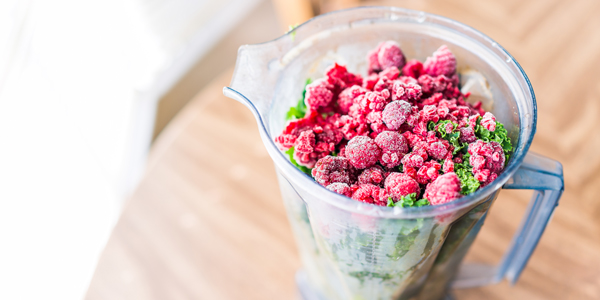
- Enjoy frozen fruits as is without cooking for smoothies, flavoring plain yogurt, adding to sautés and baking recipes.
- Vegetables can be cooked while still frozen and/or after thawing.6
- Raw meat and casseroles can be cooked, or reheated, from the frozen state.
- Always reheat and/or cook foods to their recommended internal temperature, as verified with an instant-read food thermometer.
Stocking Your Freezer While Preserving Nutrients
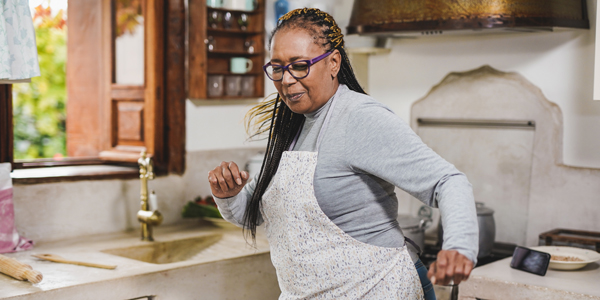
As you can see, any challenges that impact nutrition as you age can be minimized by incorporating a few new practices into your everyday routine. Preserving nutrients and flavor of seasonal produce and your favorite recipes by freezing is a great way to control your food budget as well.
Happy freezing!
1 United States Department of Agriculture. Freezing and food safety. https://www.fsis.usda.gov/food-safety/safe-food-handling-and-preparation/food-safety-basics/freezing-and-food-safety. Accessed on June 15, 2023.
2 Utah State University. Food preservation: freezing basics. https://extension.usu.edu/preserve-the-harvest/freezing-basics. Accessed on June 15, 2023.
3 University of Nebraska-Lincoln. Freezing produce. Food. https://food.unl.edu/article/freezing-produce#fruit. Accessed on June 15, 2023.
4 University of Minnesota Extension, Schafer, W. The science of freezing foods. https://extension.umn.edu/preserving-and-preparing/science-freezing-foods. Accessed on June 15, 2023.
5 Shumaker, C. K. Food preservation: freezing basics. https://ohioline.osu.edu/search/site/factsheet%20hyg%205341. Accessed on June 15, 2023.
6 Cheng, A., & Yip, K. Preserve food by freezing – and how to handle frozen food safely? https://www.cfs.gov.hk/english/multimedia/multimedia_pub/multimedia_pub_fsf_190_02.html. Accessed on June 15, 2023.
7 National Center for Home Food Preservation. So easy to preserve. https://nchfp.uga.edu/#gsc.tab=0. Accessed on June 15, 2023.
Published 10/2/2023


